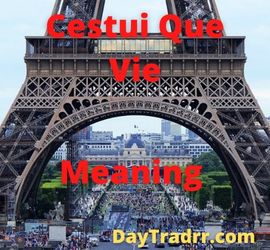What Are Naked Calls in Options Trading?
 Naked calls are a type of option speculation strategy where an investor writes (sells) a call option without owning the underlying security.
Naked calls are a type of option speculation strategy where an investor writes (sells) a call option without owning the underlying security.
This strategy is also known as an uncovered call or an unhedged short call. It differs from a covered call strategy in which the investor owns the underlying securities on which the call options are issued. In this regard, a naked call is similar to a naked put. The naked call method is potentially quite dangerous. If the option is exercised, the investor must then purchase the option’s underlying stock at the current market price. Stock prices, by definition, have no upper limit. This means that if the option is exercised, the investor could ultimately lose a considerable amount of money.
Naked Calls – A Closer Look
A naked call allows an investor to receive premium revenue without selling the underlying securities. Essentially, the only reason for writing an uncovered call option is to receive that premium. It is hazardous by definition, as there is limited upside profit potential. However, in principle, there is limitless downside loss potential. In other words, the option writer’s maximum gain is the upfront premium, which is normally deposited to their account. As a result, the writer’s best scenario is to keep the premium and have the option expire worthless.
Nevertheless, this is a risky strategy as the maximum loss is potentially limitless. This is because there is no restriction on how high the underlying security’s price might increase. However, given their risk tolerance and stop-loss settings, the seller of the options will most likely purchase them back before the underlying price climbs too much over the strike price. As a result, a seller of call options wants the underlying securities to decline in value. This is so that they may receive the whole premium if the option expires worthless. However, if the underlying security’s price rises, they may be forced to sell the stock at a much lower price than the market price because the option buyer may elect to exercise their right to acquire the security.
Naked calls – Limited profit potential with unlimited downside risk
The maximum loss, however, is theoretically unlimited because there is no cap on how high the price of the underlying security can rise. However, in more practical terms, the seller of the options will likely buy them back well before the price of the underlying rises too far above the strike price, based on their risk tolerance and stop-loss settings. A seller of call options, therefore, wants the underlying security to fall, so that they can collect the full premium if the option expires worthless. But, if the price of the underlying security instead rises, they may end up having to sell the stock at a price far below the market price because the option buyer may decide to exercise their right to purchase the security—that is, they would be assigned to sell the stock. (Source: investopedia.com)
Why Trade Naked Calls?
The breakeven point for the option writer is calculated by adding the option premium received to the strike price of the call that has been sold. A spike in implied volatility is unfavorable to the writer. This is because it enhances the likelihood of the option being in the money (ITM) and hence being exercised. The option writer wishes for the naked call to expire out of the money (OTM). Therefore, the passage of time, or time decay, will benefit this approach.
Because of the risk involved, only experienced investors who are confident that the underlying security’s price will decline or remain flat can pursue this sophisticated technique. Due to the proclivity for open-ended losses, margin requirements for this method are frequently quite large. Also, the investor may be obliged to acquire shares on the open market prior to expiration if margin levels are exceeded. The primary advantage of writing naked calls is that it allows the investor to earn income in the form of premiums. Further, the option writer can do this without having to put up a large amount of initial cash.
Again, writing uncovered calls presents a considerable chance for loss. However, there are investors who are confident that the underlying security’s price, generally a stock, will decline or remain unchanged. These investors can write call options to earn the premium. If the stock price remains below the strike price between the time the options are issued and their expiration date, the option writer keeps the whole premium minus fees.
Naked Calls – What if the underlying stock price goes up?
If the stock price rises above the strike price by the expiration date of the options, the buyer of the options can demand that the seller produce shares of the underlying stock. The options seller will then have to go into the open market and purchase those shares at market price in order to sell them to the option buyer at the option strike price. If, for example, the striking price is $100 and the company’s open market price is $110 at the time the options contract is exercised, the options seller will lose $10 per share of stock less the premium paid.
Example
Stock ABC is trading at $47.90 per share, DEC 50 Call is trading at a $1.25 premium
Daytradrr forecasts that ABC will not trade above $50.00 per share before December, so Daytradrr sells the 1 DEC 50 Call for $125.00. Each option contract controls 100 shares. Daytradrr doesn’t buy the stock, therefore this is considered a naked call. Meanwhile, the Optimistic Investor (OI) forecasts that ABC will go above $50.00 per share before December, so OI purchases the call from Daytradrr for $125.00. At the expiration of the option, there are 4 different possible scenarios:
ABC Share Price (December 31st)
- Falls – ABC Stock drops to $45.00 and DEC 50 Call expires worthless. Daytradrr keeps the entire premium of $125.00. Optimistic Investor experiences a 100% loss.
- Stays the same – ABC Stock stays at $47.90 and DEC 50 Call expires worthless. Daytradrr keeps the entire premium of $125.00. Optimistic Investor experiences a 100% loss.
- Rises moderately – ABC Stock rises to $52.50 and DEC 50 Call is exercised. Daytradrr is forced to buy 100 shares of ABC for $5,250.00 and immediately sell them at $5,000.00 for a loss of $250.00. Since Daytradrr received the premium of $125.00 before, Daytradrr’s net loss is $125.00. Optimistic Investor buys 100 shares of ABC for $5,000.00 and now is able to sell them at the open market price of $52.50 per share. OI’s net gain is $125.00, the same as Daytradrr’s loss excluding commission costs
- Surges – ABC Stock doubles to $100.00 on an unexpected news announcement. DEC 50 Call is exercised. Daytradrr is forced to buy 100 shares of ABC for $10,000.00 and immediately sell them at $5,000.00 for a loss of $5,000.00. Since Daytradrr received the premium of $125.00 before, Daytradrr’s net loss is $4,875.00. Optimistic Investor buys 100 shares for $5,000.00 and paid the premium of $125.00 before. These shares are now worth $10,000.00 on the open market. OI’s net gain is $4,875.00. This amount is the same as Daytradrr’s loss if commission costs are omitted.
Assuming there are no other costs or taxes affecting the contract, one of two general things happens on December 1st: 1) Optimistic Investor experiences a 100% loss of $125,00, 2) Optimistic Investor profits by the same amount of Daytradrr’s net loss.
Up Next: What Is Cestui Que Vie?
 Cestui Que Vie is the person for whom a benefit exists and whose life measures the duration of a trust, gift, estate, or insurance contract. The term, Cestui que vie is French for “he who lives“. It is a legal term for a person who is the beneficiary of a trust or an insurance policy. Also, this person has rights to property as well as the income and profits that the property produces. A cestui que trust is a person who is entitled to an equitable share in the estate assets rather than a legal share.
Cestui Que Vie is the person for whom a benefit exists and whose life measures the duration of a trust, gift, estate, or insurance contract. The term, Cestui que vie is French for “he who lives“. It is a legal term for a person who is the beneficiary of a trust or an insurance policy. Also, this person has rights to property as well as the income and profits that the property produces. A cestui que trust is a person who is entitled to an equitable share in the estate assets rather than a legal share.
The same idea is also employed in modern life and health insurance contracts. The cestui que vive is a person whose life spans the period of the insurance contract. Cestui que vie is referred to as the policyholder, insured, or policy owner under these arrangements. As a result, the phrase can apply to the beneficiary of a trust or estate. However, it is more commonly used to refer to the insured rather than the recipient of an insurance policy.




